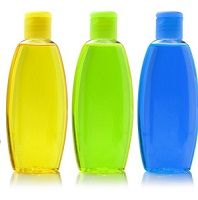Article
Added Fragrance Seen as Air Pollution Indoors
Author(s):
The US is obsessed with eliminating odors, but a survey showed that trend may be unhealthy.

Store shelves in the US are loaded with products with added fragrances.
Some are designed to eliminate unpleasant odors, like underarm sweat or basement mustiness. Others — like scents added to soaps or cleaning products – have no purpose other than to enhance their appeal.
The US obsession with making everything smell good is creating a health hazard, according to a study by an Australian expert.
A little over a third of respondents to an online survey reported adverse health effects from exposure to fragranced products, the study said. The adverse reactions included asthma attacks and other respiratory problems, migraines, dizziness, rashes, seizures, and nausea.
“This is a huge problem; it’s an epidemic,” said Anne Steinemann PHD, who is a professor of civil engineering and chair of sustainable cities at the University of Melbourne in Australia.
The results of her representative survey suggested that more than 99% of people in the US regularly are exposed to fragranced products. Among the most problematic were: air fresheners and deodorizers that created health issues for 20% of the population; being near someone wearing a scented product adversely affected 23%; 20% had a problem with being in a room after it had been cleaned with a scented product; 14% wouldn’t wash their hands with a fragranced soap.
“Basically, if it contained a fragrance, it posed problems for people,” Steinemann said.
The major categories for fragranced consumer products listed by the study also included: personal care lotions, hand sanitizers, sunscreens, shampoos, all-purpose cleaners, disinfectants, dishwashing soap, laundry detergents, fabric softeners, dryer sheets, scented candles, toilet paper, and trash bags.
Referring to her previous research, the author noted that of the 156 VOCs (volatile organic compounds) emitted from 37 fragranced consumer products, 42 were toxic or hazardous, according to US federal law. In addition, each of those products included at least one of the toxic or hazardous chemical.
Choosing to use a fragranced product labeled green, natural or organic may not avoid the potential problems. Even some of these emit hazardous air pollutants, the study said. Unscented products can include masking scents, the study added.
What compounds the problem, Steinemann added, is that such exposure often is not voluntary. These exposures are what she calls “second-hand scents”. A wary consumer may not have been able to determine whether a product has a hazardous fragrance. “No law in the U.S.. requires disclosure of all ingredients in fragranced consumer products,” the study said.
Beyond the health effects, fragranced products have economic impacts, according to Steinemann’s research.
For example, a recent trend toward scented branding--retailers introducing signature or seasonal fragrances into the air in their stores-- may not produce the sweet smell of success.
Forty percent of those surveyed reported they choose hotel rooms or airlines based on fragrance-free environments and 20% said they will leave a place of business quickly if they detect a fragrance.
Also 50% reported they prefer fragrance free workplaces and health care facilities.
Fragrance-free policies within buildings and other locations are “a relatively simple and cost-effective way to reduce risks and improve air quality and health,” Steinemann said.
Steinemann’s online survey was of a national representative random sample of 1136 adult Americans was conducted in June 2016.
The study was published online on October 20 in the journal Air Quality, Atmosphere and Health.
Related Coverage:
Air Fresheners Impact Respiratory Health
Children of Chemically Intolerant Mothers at Risk for Autism and ADHD



